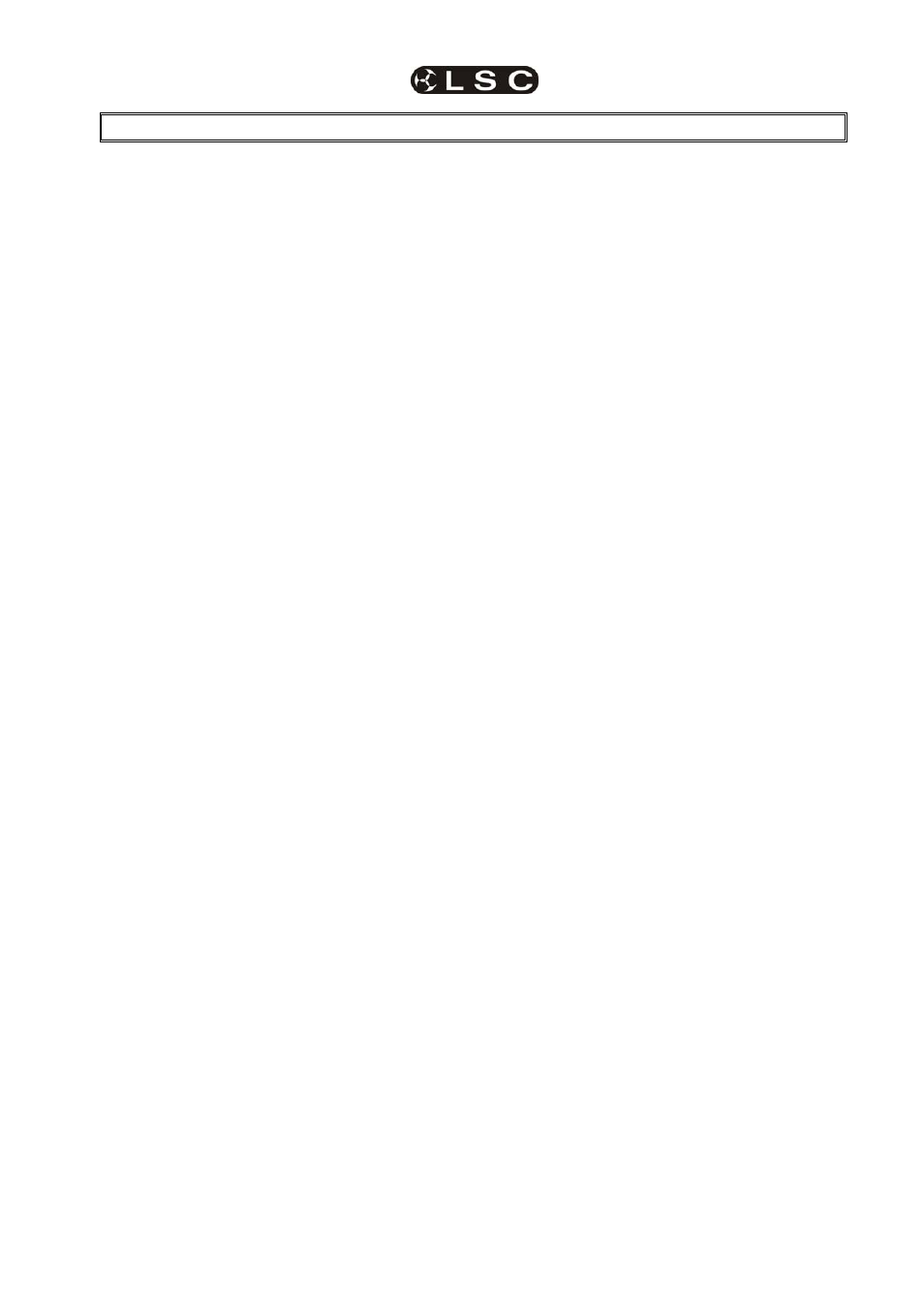LSC Lighting maXim MP User Manual
Page 81

maXim
MP L(P) XL(P) XXL(P)
Operator Manual V3
LSC Lighting Systems (Aust) Pty. Ltd.
Page 75
24 TERMINOLOGY
The following Terms are commonly used in this
maXim
Operator Manual. These Terms have
been adopted by LSC as the best descriptions for
functions and operations performed on the
maXim
and may not be terms universally adopted
on similar equipment.
24.1 FIXTURE.
A moving light, colour scroller, dimmer or any
other DMX controlled device is known as a fixture.
As you patch each Fixture you give it a unique
Fixture Number
. The fixture fader controls its
intensity and the PaTPaD controls its parameters.
24.2 DMX
SLOT.
Every Fixture has a selectable DMX starting slot
and this is patched to that same DMX SLOT
number on the maXim. The maXim will then
automatically patch all of the remaining DMX slots
for that Fixture according to the information in that
particular Fixtures Template.
24.3 TEMPLATE.
A Fixture Template is a file that tells the maXim
the function of each DMX slot for that fixture and it
defines the PaTPaD controls and labels for that
Fixture. Every different type of Fixture that you
control requires a Template.
24.4 LIBRARY.
The maXim stores its Templates in a permanent
library. The templates are organised in the library
by brand (manufacturer) and model. When you
want to use a particular model of Fixture, you
select its Template from the library and load it into
the patch. The maXim can have up to 10 different
types
of Fixture Templates (from the library) in
use in the patch at the same time.
24.5 ATTRIBUTE.
Each brand and model of Fixture has a specified
number and order of control channels. An
ATTRIBUTE
is one or two DMX control channels
(two channels used for higher resolution) that
uniquely controls one of the physical motions of
the Fixture. The manufacturer’s specification of a
Fixture lists each attribute and its control channel
number(s).
24.6 PARAMETER.
A parameter is one or more attributes that are
grouped together in the maXim to control a logical
aspect of the Fixture. The PaTPad controls
parameters
and these in turn set the attributes of
the Fixture. In many cases a parameter directly
controls the attribute of the same name. However,
a single parameter can also be used to control
multiple attributes of a Fixture. This allows a
single parameter on the PaTPad to very easily
perform a complex task on the Fixture.
24.7 WHEEL STOPS.
Parameters on the PaTPad can be continuously
variable or they can jump between pre-defined
values called wheel stops. Each wheel stop can
be given a name that will appear on the PaTPad
when that wheel stop is selected. A wheel stop
can also have a limited variable area within the
stop.
24.8 GROUP.
A group is a list of 2 or more Fixture numbers.
Groups provide a rapid method of loading, Hi-
lighting, or cloning many Fixtures in a single
operation.
24.9 FILTER.
Filters are a powerful tool that you can use to
select exactly which parameters of a fixture are
involved in most PaTPad operations.
If no filters are applied, all parameters are
included (subject to Hi-lights) in any store, preset,
palette or padlock operation. If any parameter is
filtered
, then only filtered parameters are
included (subject to Hi-lights). One simple rule is
applied;
Only FLASHING parameters are INCLUDED.
24.10 HI-LIGHT.
Hi-lights are a tool that you can use to select
exactly which fixtures on the PaTPad are
involved in most PaTPad operations. When a
fixture is loaded onto the PaTPad it is
automatically Hi-lighted.
If a fixture is Hi-lighted, it is included (subject to
the filters) in any store, preset, palette or padlock
operation.
If a fixture is not Hi-lighted, it is not included in
any store, preset, palette or padlock operation.
The same simple rule is applied;
Only FLASHING parameters are INCLUDED.
24.11 PRESET.
A preset is a special type of scene that can be
stored or recalled from the PaTPad. It is stored
with specific Fixtures Numbers and usually with
only specifically filtered parameters (for example,
only focus). When a preset is recalled, the
specific Fixtures
in that preset will respond to
their parameter settings (if the parameter is
flashing). A link to a preset can be included in any
normal scene allowing that scene to automatically
recall the preset. Multiple scenes can include a
link to the same preset. Editing a single preset will
automatically change the look of all scenes that
include a link to that preset.
24.12 PALETTE.
A palette is a special type of scene that can be
stored or recalled from the PaTPad. A palette
refers to specific Fixtures types (Templates) and
is usually stored with only specifically filtered